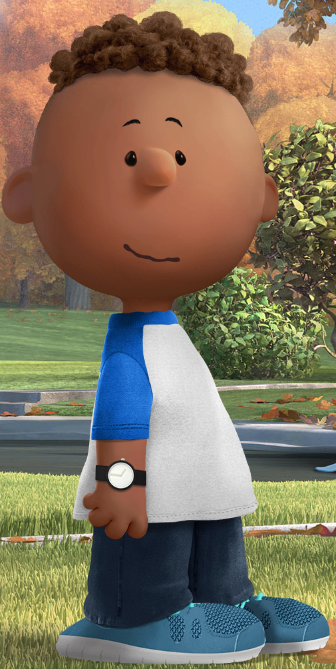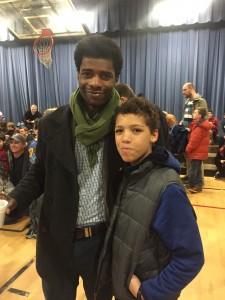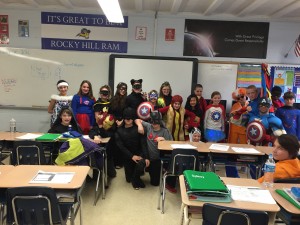My 25th week of fifth grade was amazing! First of all, remember my last post with the court case that I lost? Well, I won the next one! You can see me and my friend present our winning speech in my Court Case post. Also this week, there was an awesome steel drum ensemble on Thursday. You can see highlights of that in my Steel Drums post. Finally, my class got news that the new songs that we’re making will be presented to Bill Gates, the CEO of Microsoft! My song isn’t quite done yet, but overall, I had an awesome week!
Author: rockyhillkieran
Week 24
My 24th week of fifth grade was messed up (Slightly in a good way)! Almost all of last week were snow days, and that is why I don’t have a week 23 post. This week, we were going to have our standardized testing on a computer, but the entire website crashed and we had to take the test on paper. It was kind of harder writing out an essay on paper since you can’t copy and paste, but in a way it was easier because you can write faster. Also this week, our class presented our court case powerpoints. My team lost, but in a couple of minutes we will present them again! All in all, I had a great week!
Pollution Paper
Pollution Comparative Essay
By Kieran Darko
Have you ever thought about all of the pollution in the world? Well, in the articles Drinking Water: Bottled or from the Tap? by Catherine Clarke Fox and Art for Ocean Animals by Elise Jonas-Delson, both passages write about the trash that has accumulated in the United States and the rest of the world, and how we can make a difference. My essay is about the two authors, and how they have both similar and different views about the world’s pollution problems.
Both texts have very similar views. In Drinking Water: Bottled or from the Tap? by Catherine Clarke Fox, the text states that plastics hurt the environment. For example, the text states, “But all those plastic bottles use a lot of fossil fuels and pollute the environment. In fact, Americans buy more bottled water than any other nation in the world, adding 29 billion water bottles a year to the problem. In order to make all these bottles, manufacturers use 17 million barrels of crude oil. That’s enough oil to keep a million cars going for twelve months.” Art for Ocean Animals by Elise Jonas-Delson also has comparable views about this topic. In this text, the author states, “Plastic doesn’t break down and become absorbed by the environment. Instead, sunlight breaks it down into pieces about the size of plankton, which are tiny organisms that float in the sea. These tiny pieces of plastic enter the food chain. Sea animals eat them and end up dying.” In summary, both Drinking Water: Bottled or from the Tap? by Catherine Clarke Fox and Art for Ocean Animals by Elise Jonas-Delson have similar views about the topic of plastics polluting the world.
In addition to having similar views, Catherine Clarke Fox and Elise Jonas-Delson also differ in their ideas. Art for Ocean Animals by Elise Jonas-Delson has a more naturalist outlook on plastic pollution in the way that the author seems to focus on how pollution hurts animals in the ocean. For example, in, the text states, “Pozzi always loved the ocean and the animals in it, and she wanted to do something to help both.” However, Drinking Water: Bottled or from the Tap? by Catherine Clarke Fox leans more toward pollution’s effects on humans. In an example of this text, the author states, “There is also growing concern that chemicals in the bottles themselves may leach into the water.” The two texts also contrast in the way the authors believe how we can stop pollution. In Art for Ocean Animals by Elise Jonas-Delson, the text states, “Kids have a lot of power,” she told TFK. “They are the ones that can make things happen. I really believe it.” In contrast, Drinking Water: Bottled or from the Tap? by Catherine Clarke Fox discloses more about how we can help make the Earth a better place by recycling. In this text, the writer annunciates, “Plastic bottle recycling can help—instead of going out with the trash, plastic bottles can be turned into items like carpeting or cozy fleece clothing.” Catherine Clarke Fox also states, “And yes, you can make a difference. Remember this: Recycling one plastic bottle can save enough energy to power a 60-watt light bulb for six hours.” In summary, both author’s ideas can be different.
In conclusion, Drinking Water: Bottled or from the Tap? by Catherine Clarke Fox and Art for Ocean Animals by Elise Jonas-Delson have similar ideas in the way of plastics polluting the world, yet differ in the ways of what we should save, and how we can help. However, I believe that despite their differences, both texts address the problem of pollution, yet still know that we can always make a difference in the world for the better.
Rescue Dogs (Writing 2)
Comparative Essay
By: Kieran Darko
Did you know that there are many different types of working dogs? In the passages “It’s a Dog’s Life” by Rebecca Upjohn Snyder and “Hide-and-Seek-School” by Vivienne Lenk the passages discuss a border collie that herds sheep in the fields of Northeastern America and avalanche rescue dogs in training in snowy Colorado. In my essay, I will compare and contrast the lives of border collie herders and avalanche rescue dogs.
Both “Hide-and-Seek-School” by Vivienne Lenk and “It’s a Dog’s Life” by Rebecca Upjohn Snyder are similar. In both texts, the passage states that the dogs are loyal to their handlers. In “It’s a Dog’s Life” by Rebecca Upjohn Snyder, the text states, “They are “friends, full of devotion,” he adds. “They are always there.” Likewise, in “Hide-and-Seek-School” by Vivienne Lenk, the text also states, “Rube is definitely showing signs of deep loyalty to me” she said, “and that is the most important thing for a dog and handler.” Additionally, both texts state that both rescue dogs and working border collies have good herding and retrieving instincts. In “Hide-and-Seek-School” by Vivienne Lenk, the text states, “They have strong instincts to retrieve, which means “bring back” and to herd, which means “to group.” Similarly, in “It’s a Dog’s Life” by Rebecca Upjohn Snyder, the author includes, “They were chosen for their instinct to gather stock, or farm animals, and bring them back to their masters.” In conclusion, avalanche rescue dogs and border collie herders are similar. But both working dogs are also different.
The passages “It’s a Dog’s Life” by Rebecca Upjohn Snyder and “Hide-and-Seek-School” by Vivienne Lenk are also quite different. In “It’s a Dog’s Life” by Rebecca Upjohn Snyder, the text states that only border collies make the best working dogs. In contrast, “Hide-and-Seek-School” by Vivienne Lenk includes many different types of dogs that made great rescuers. The articles also differ in the way of their upbringing. In “It’s a Dog’s Life” by Rebecca Upjohn Snyder, the text states, “David’s dogs are working dogs, not pets. He expects them to earn their keep by working. Because border collies have such a strong desire to work, David never sells the puppies he breeds as pets. He will only let a puppy go to a working situation.” However, “Hide-and-Seek-School” by Vivienne Lenk discloses, “The dogs are their personal pets and rescue partners.” In summary, both passages are quite different.
In conclusion, the articles “Hide-and-Seek-School” by Vivienne Lenk and “It’s a Dog’s Life” by Rebecca Upjohn Snyder are similar in ways of loyalty and instinct, although they are different in the ways of diversity and upbringing. Yet despite their differences, all working and rescue dogs help make the world a better place. The next time that you see, hear, or read about a rescue dog in action, make sure to take a moment to appreciate just how exceptional they are.
Pluto: Yea or Nay (Writing 1)
Why I am For Pluto Becoming a Planet
By Kieran Darko
In the articles “What Is a Planet?” from the National Aeronautics and Space Administration (NASA) and “When is a Planet Not a Planet?” by Daniel Santos, both passages state that in 2006, the International Astronomical Union (IAU) reclassified Pluto as a dwarf planet. I strongly believe that their decision was wrong because of the vague criteria, the small percentage of IAU members that voted, and the fact that Pluto has become a part of history.
One reason that I strongly believe that Pluto should stay a planet is because of the vague criteria that the IAU used to reclassify it. In “When is a Planet Not a Planet”, the author states, “According to the definition, a planet must (1) orbit the sun, (2) be massive enough for its own gravity to have pulled it into a sphere, and (3) have cleared other objects from its orbital neighborhood. Pluto fails to meet the third criterion: It shares its neighborhood with far too many chunks of rock and ice. So Pluto isn’t a planet–it’s a dwarf planet.” However, many people (including many scientists and myself) believe that this was not an accurate criterion. Additionally, in “When is a Planet Not a Planet”, the text also states, “Alan Stern, head of the New Horizons mission to Pluto, called it “awful” and “sloppy science.” Daniel Santos also states, “Within days of the vote, 304 astronomers had signed a petition protesting the IAU’s definition. Those same astronomers also declared that the voting process had been deeply flawed.” The author also states, “But what does “clear the neighborhood” mean? How big is the neighborhood? How clear must a planet make its orbit? Earth, Mars, Jupiter, and Neptune all share their orbits with thousands of asteroids, but no one claims they aren’t planets. Also, asked protesters, why does it matter if Pluto’s neighborhood is full of smaller objects? If a body goes around the sun and is round, why isn’t that enough? As Alan Stern put it, planets “are what they are, independent of what they orbit near.” Until the IAU revises the definition to answer these and other questions, the protesters declared, Pluto should stay a planet.”
I also strongly believe that the IAU’s decision to reclassify Pluto as a dwarf planet is incorrect because not enough IAU members voted on the decision. In “When is a Planet Not a Planet?” by Daniel Santos, the text annunciates, “In 2006 about 10,000 astronomers belonged to the IAU. Of those, fewer than 500 voted.” The text also states, “Astronomer David Weintraub, author of the book Is Pluto A Planet?, said, “I’m not convinced that the folks who were at the meeting represented well the larger community.”
A last reason that I strongly believe that Pluto should stay a planet is because it has been a planet for a very long time. In the passage “When is a Planet Not a Planet?” by Daniel Santos, the author says, “Pluto’s identity as a planet wasn’t just a matter of science. It was also a matter of history. After all, Pluto had been a planet for more than 70 years. People had grown used to the idea. Textbooks and museums would have to what they said.”
In conclusion, I very strongly believe that the IAU’s decision to reclassify Pluto as a dwarf planet was incorrect because of the vague criteria, the small percentage of IAU members that voted, and the amount of history that Pluto has.
Week 22
I had a writing-filled 22nd week of fifth grade. In this week, my class had to do 3 writing essays in 4 days. You can see them in my Writing posts. They were pretty challenging, but once you learn to do them, they start to get pretty easy. Also this week, my school had a big basketball tournament at recess on Thursday. I didn’t participate, but a lot of my friends did, and it was really fun to watch. In the end, I had a great 22nd week.
Song
Week 21
My 21st week of fifth grade was exceptional! It was actually the 22nd week, but all of last week was snowed out! I had lots of fun in the snow. My school had an awesome super-hero themed special night that had a book fair. In the same night, we had a mystery caper with superheroes to find out who was switching around the book titles in the library. Overall, it was a great week!


